Planing is essential to any machining operation. Here is an example of how to plan and manufacture the practice shaft.
First things first – study the drawing to establish what required:
- Material – type & size
- Tools required
- Tolerances
- Special features
- H&S Requirements -PPE
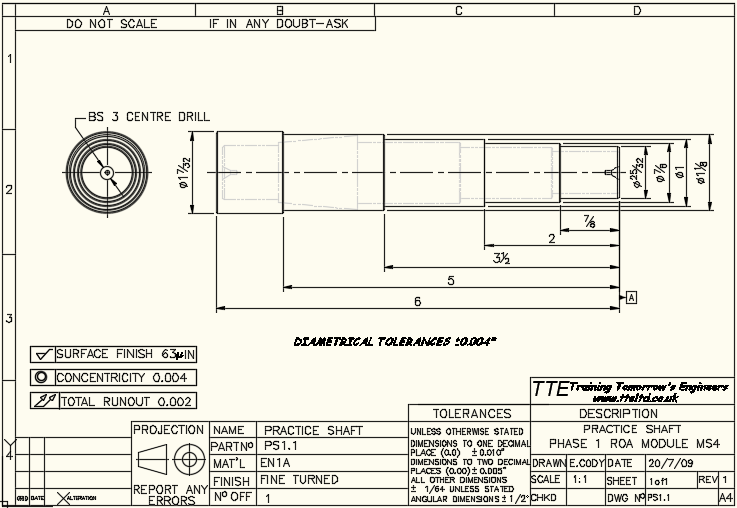
Work Plan
- Select the correct material, cut to length leaving an allowance for the safety shoulder & over run.
- Face off & Centre drill (front end)
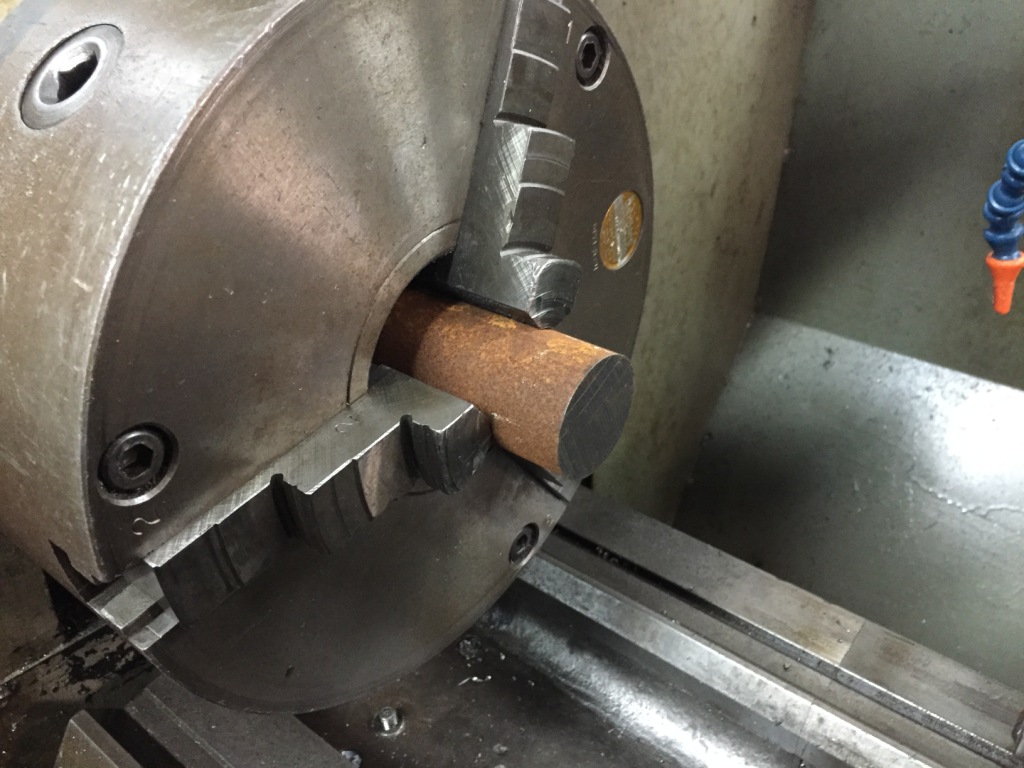 Above shows the material gripped with minimum overhang.
Above shows the material gripped with minimum overhang.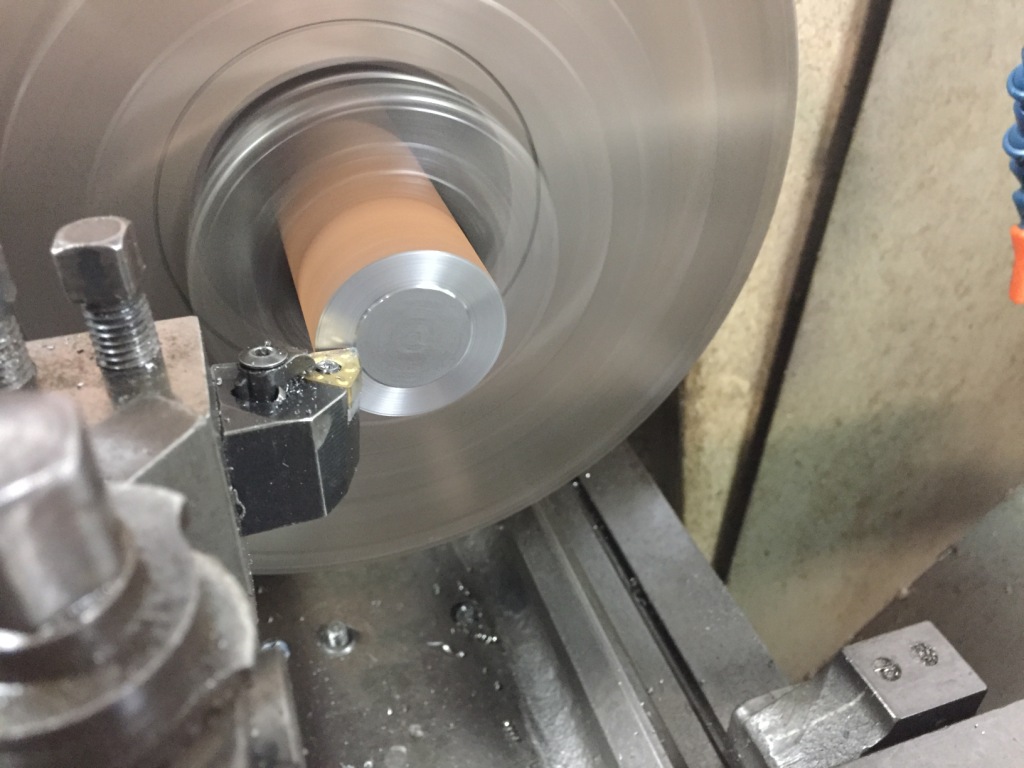
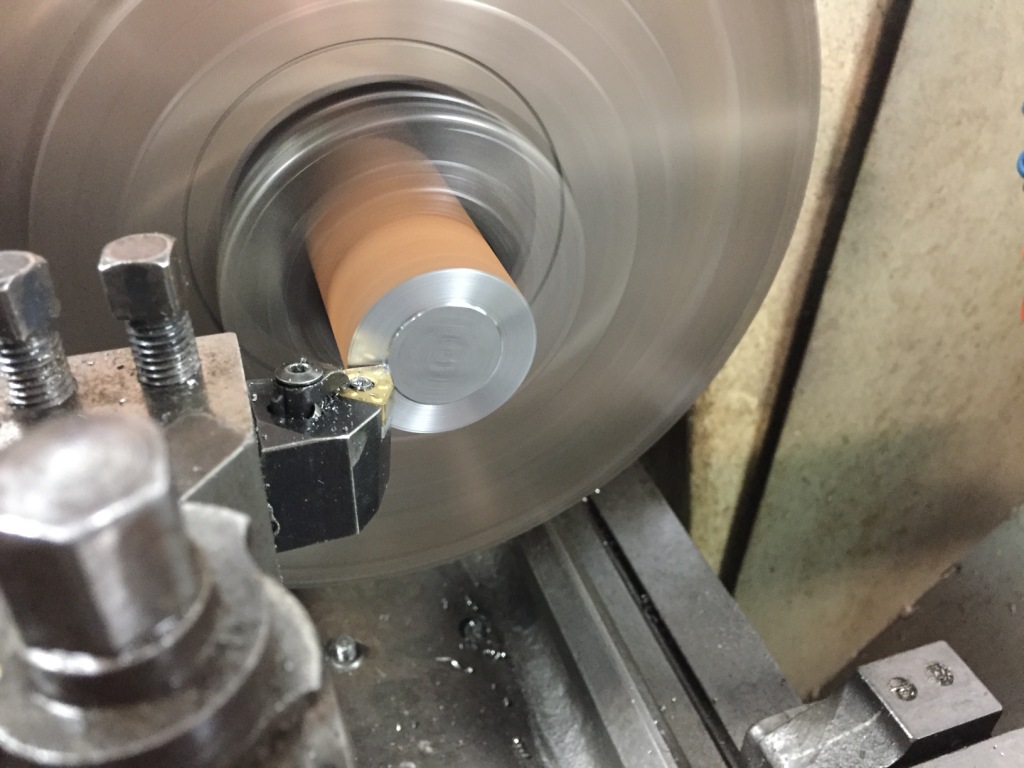
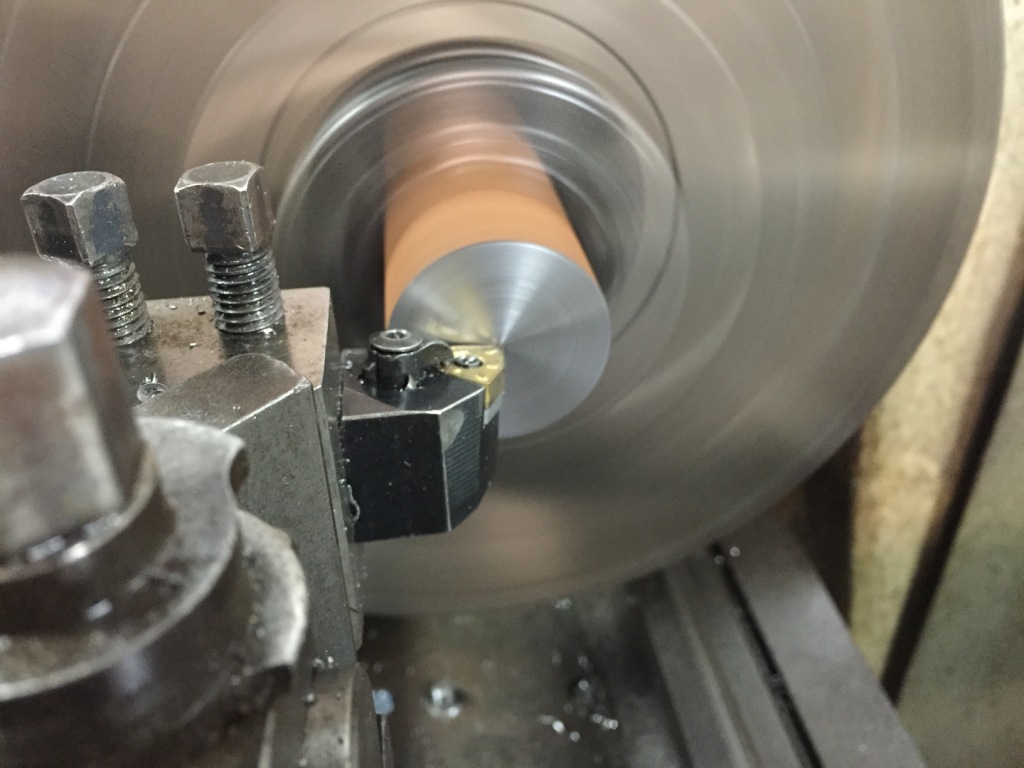
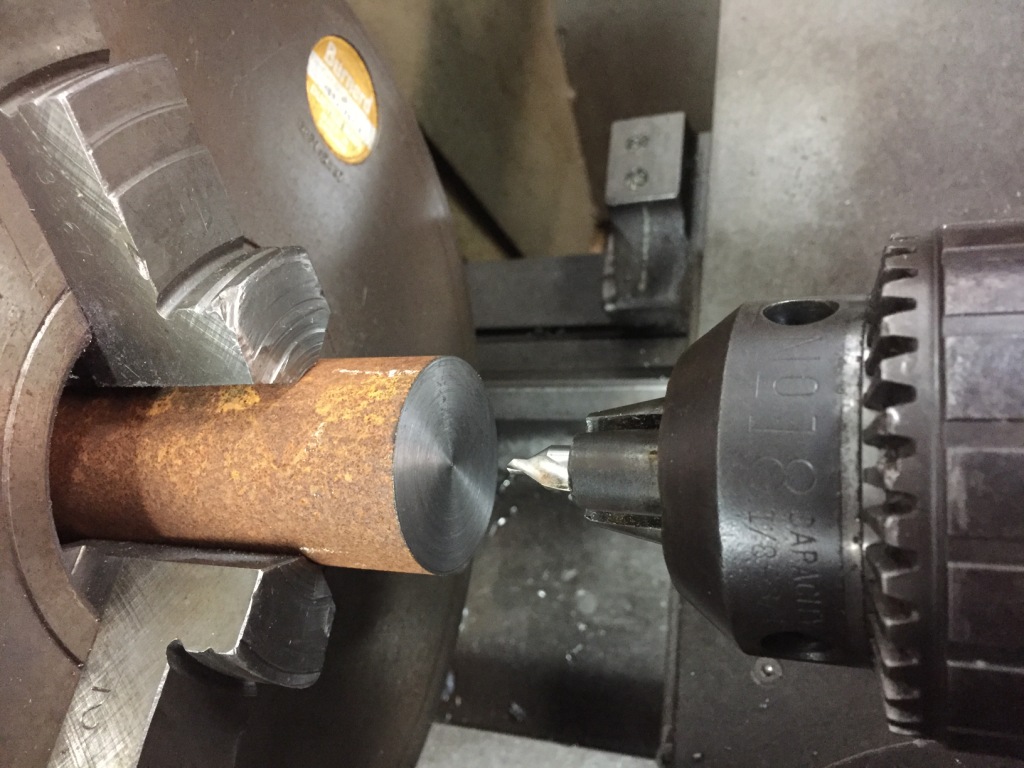
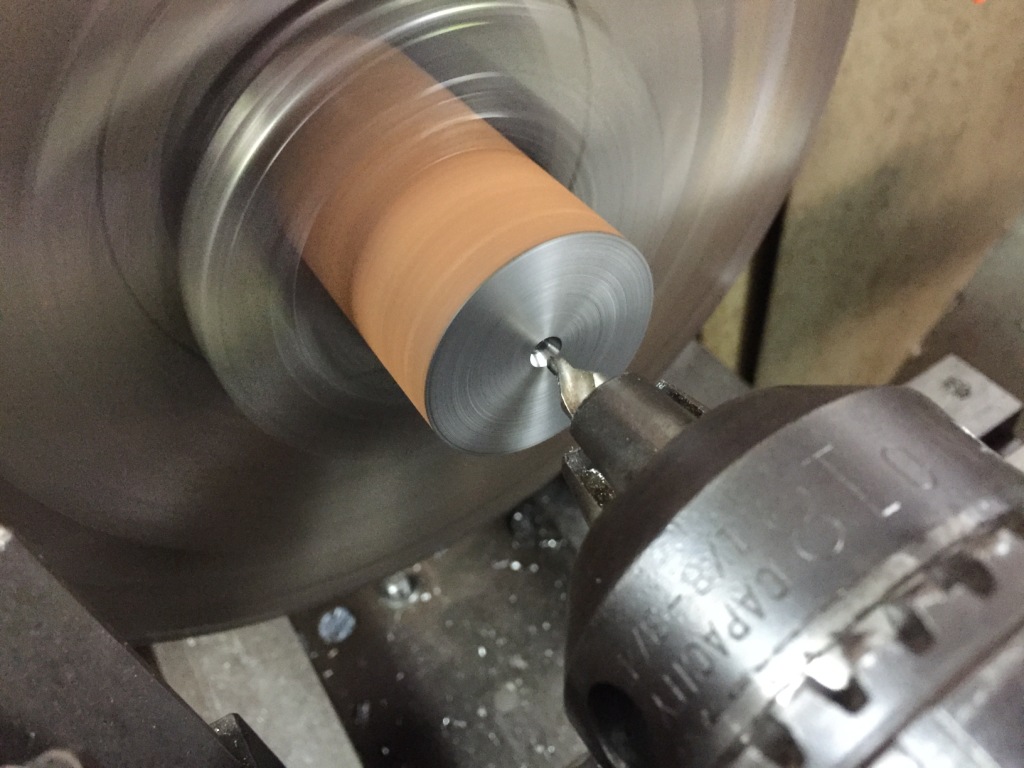 The above pictures show the end being faced & centre drilled.
The above pictures show the end being faced & centre drilled. - Turn the safety shoulder (back end)
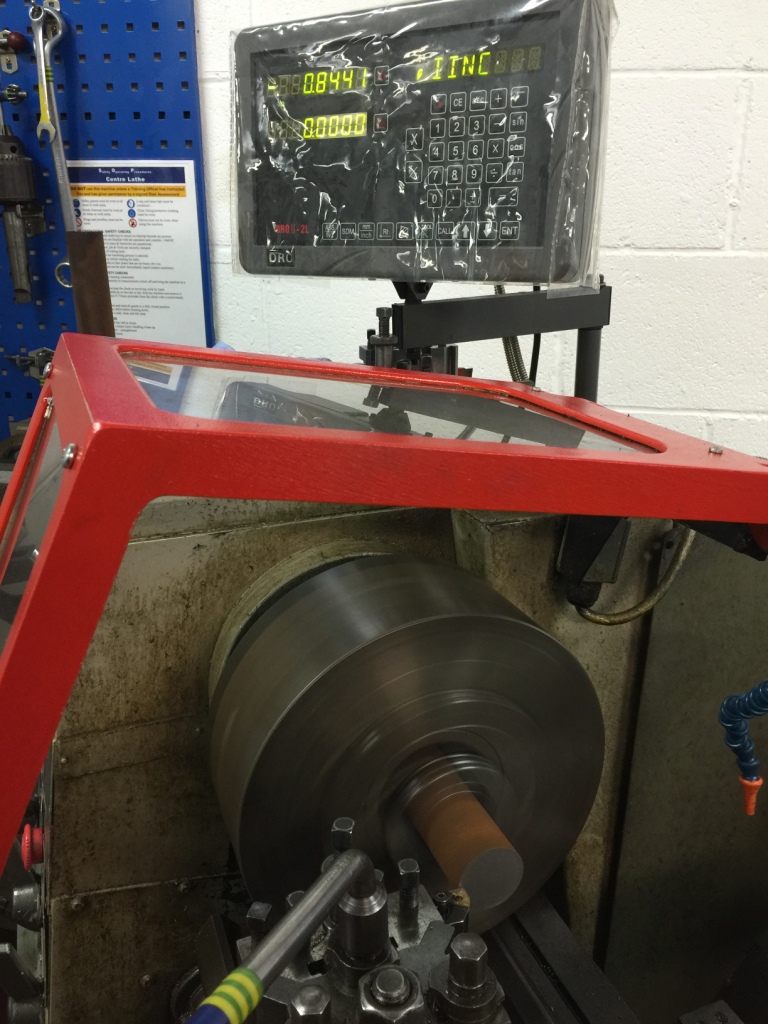
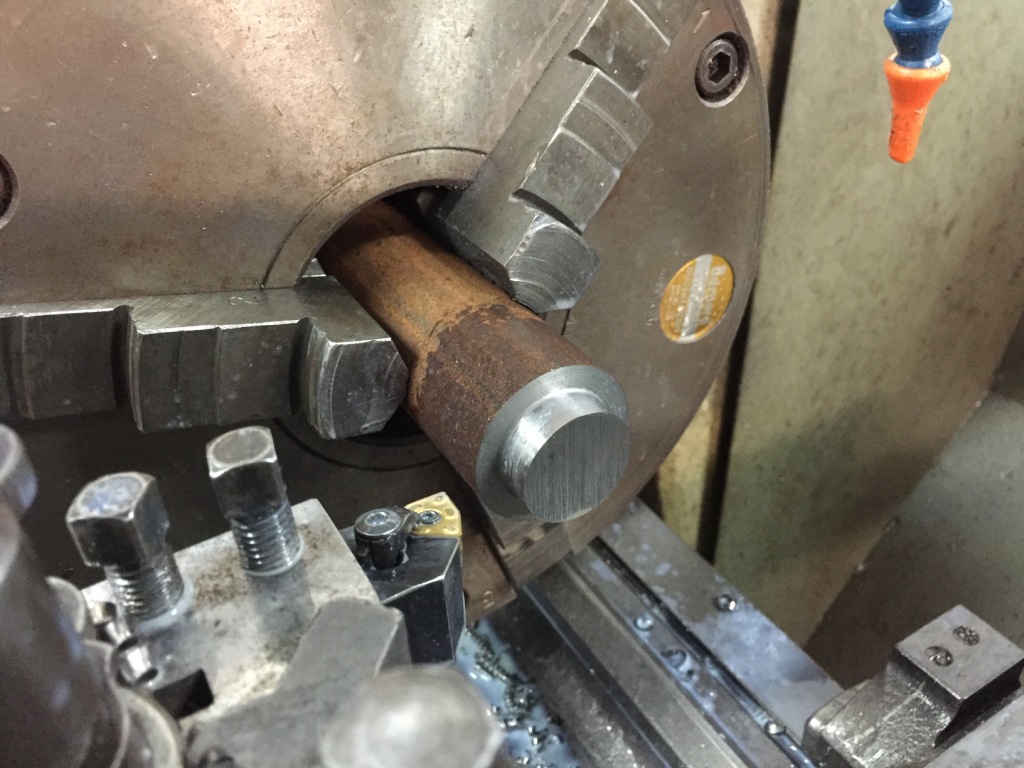 Above shows the safety shoulder being turned to specification.
Above shows the safety shoulder being turned to specification. - Grip on the safety shoulder and support with a rotating centre (ensure the centre is fully engaged).
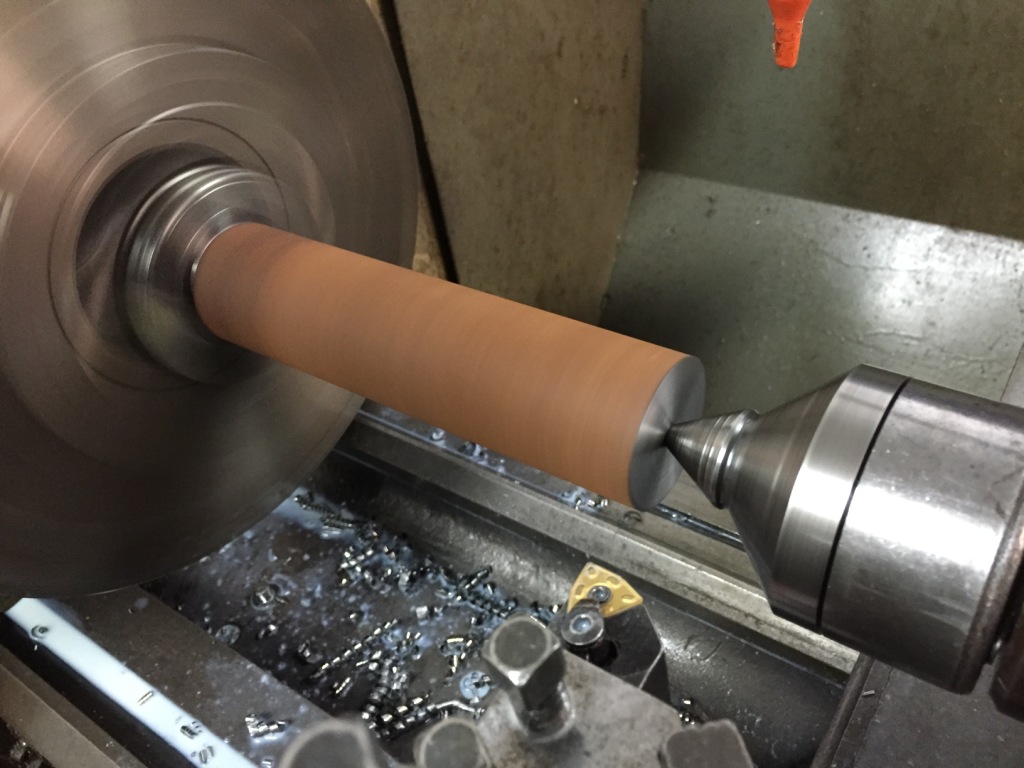 Above shows the rotating centre fully engaged with enough clearance for the turning tool to access the front face.
Above shows the rotating centre fully engaged with enough clearance for the turning tool to access the front face. - Rough turn all diameters & lengths.
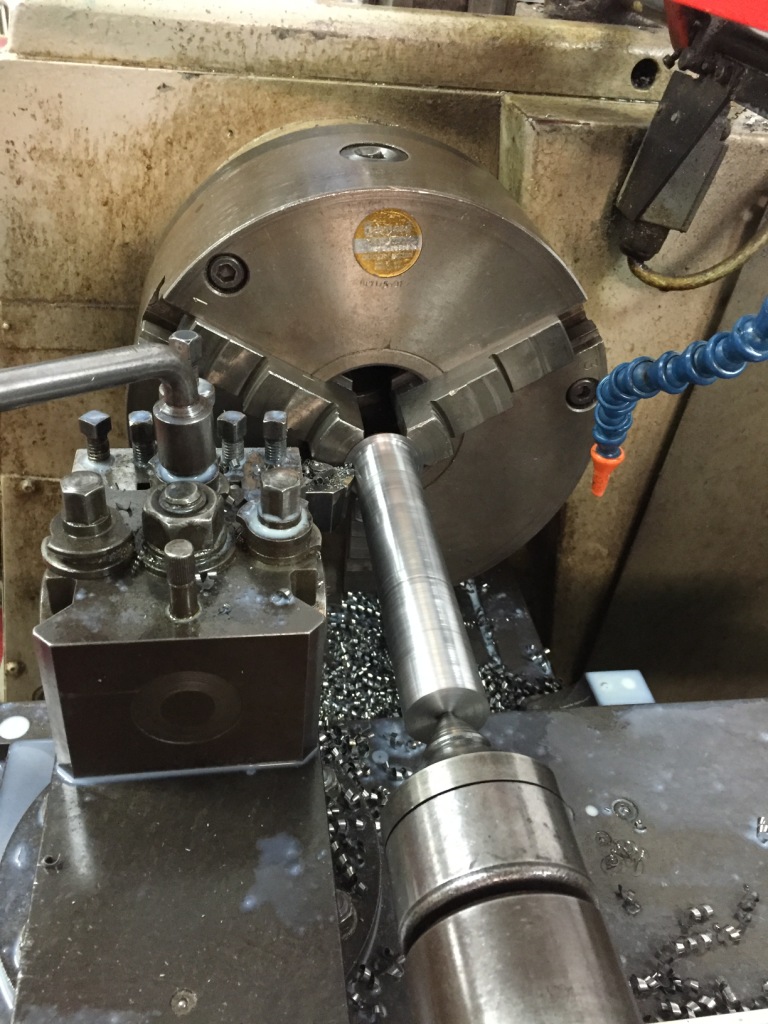
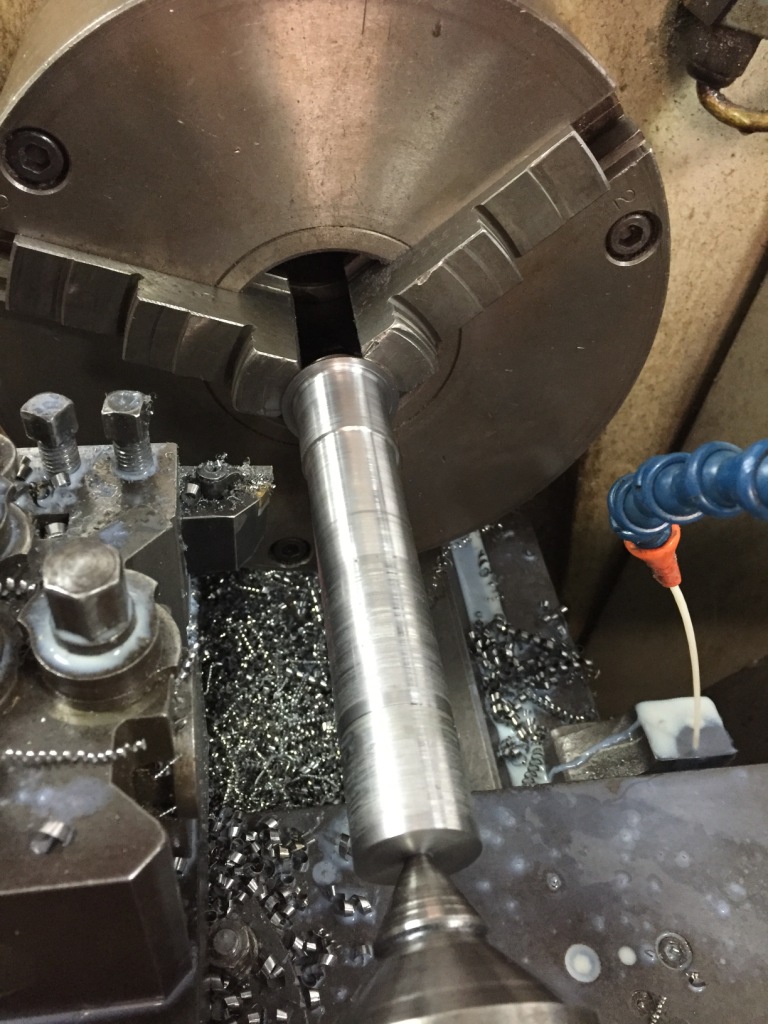 Above shows the diameters & lengths being rough turned.
Above shows the diameters & lengths being rough turned. - Finish all diameters & lengths to specification.
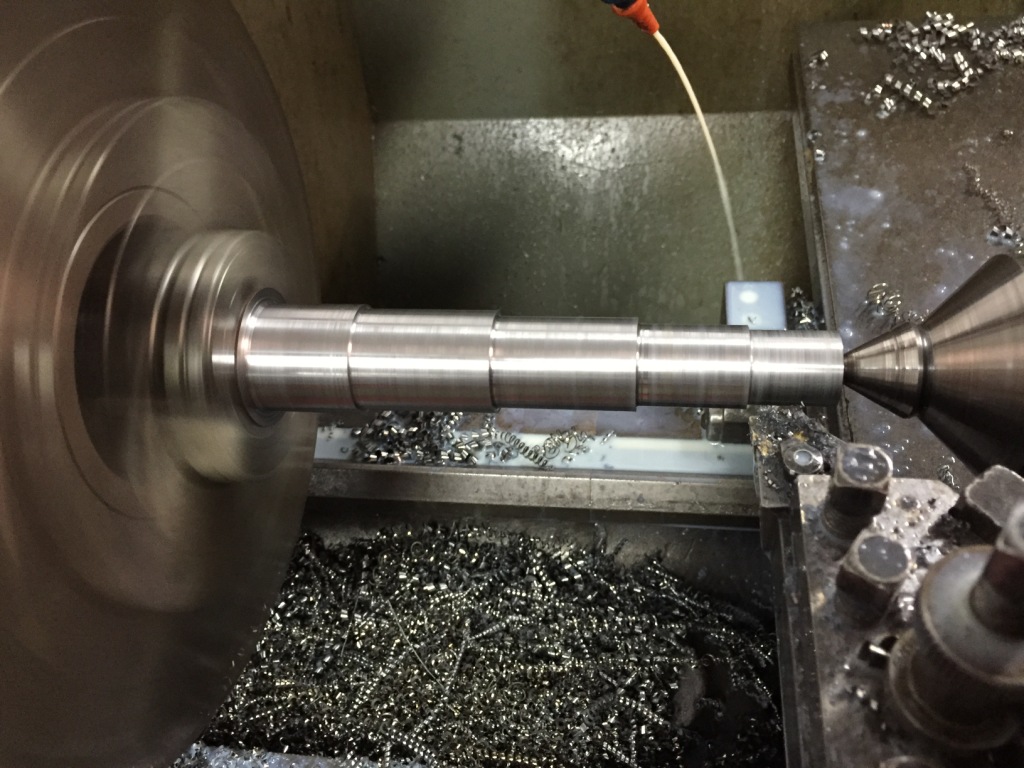 Above shows all diameters & lengths being finish turned.
Above shows all diameters & lengths being finish turned. - Chamfer all required diameters.
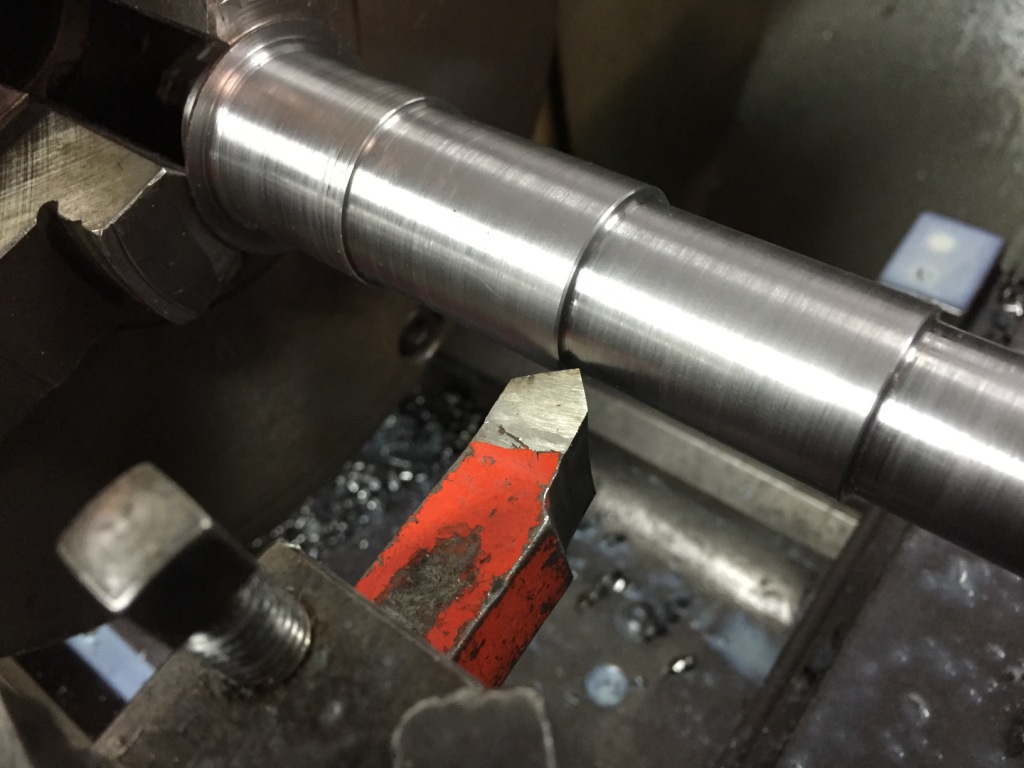 Above shows the chamfer tool – note how the tip is clear of the diameter.
Above shows the chamfer tool – note how the tip is clear of the diameter. - Remove from the chuck then re-mount in preparation for finishing.
TOP TIP - Make sure the diameter you are gripping on is protected from damage by the jaws (wrap the diameter in 0.005" shim ensure the shim does not overlap as this will cause runout). How can you ensure you cut the shim the correct length? Easy,did ever think you would use π (Pi) in the machine-shop? Well now is the time, so for example - the diameter you want to protect is ∅40mm so what is the length of shim required? The circumference less a little bit! As we don't want any overlap. So the formula for the circumference = πxd (π=3.142) here is the easy bit as we require the shim not to meet or overlap therefore we can call π "3" so 3x40= 120 gives us the required length of shim.
- Check for runout with the DTI (Dial Test Indicator).
- Face off to length, Chamfer & Centre drill to specification.
- Inspect the finished component to the drawing and complete any required handover documentation.
- Return all tools, materials and equipment.
- Reinstate the machine/work area to a safe tidy manner disposing of any waste materials in the appropriate waste bins.